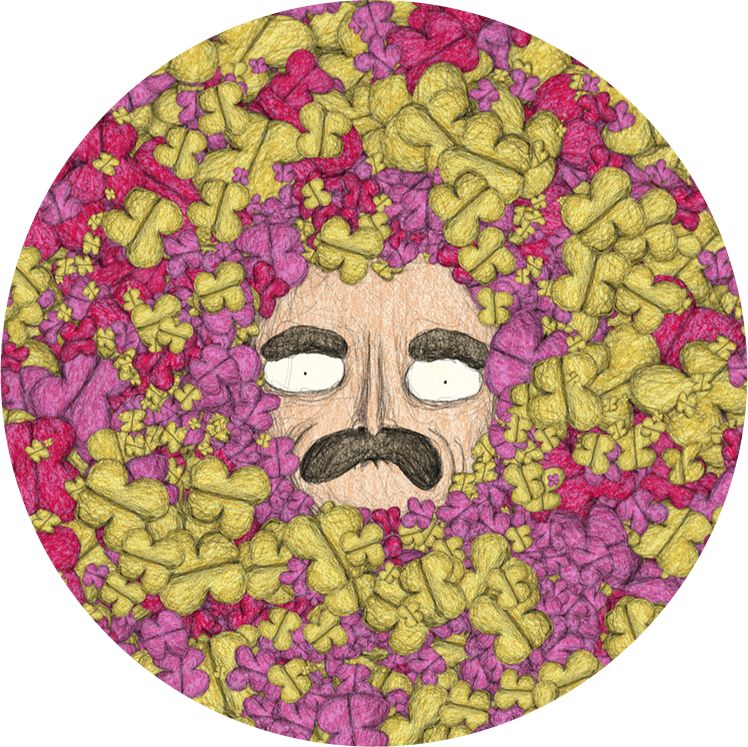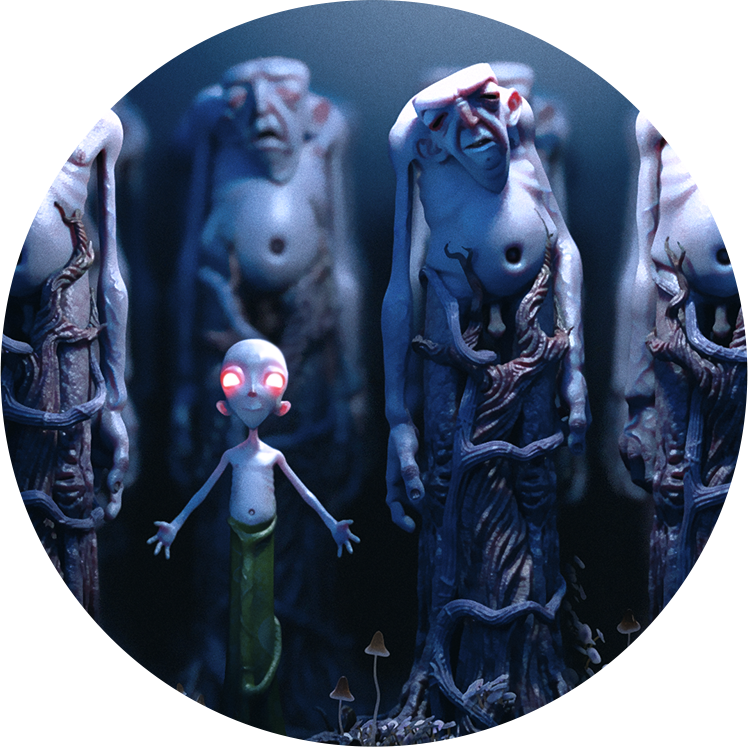
Slovenia’s animation industry has made notable strides in recent years through coordinated domestic collaboration after decades of significant contributions to international film festivals.
The Slovenian animation industry, though relatively small, is rooted in a rich tradition of storytelling and artistic expression, making it a distinctive voice in the Central and Eastern European animation landscape. With a long-history in stop-motion, Slovenia’s animation style is characterised by its artistic quality and narrative depth, with stories deeply rooted in the country’s cultural heritage, often drawing on folklore, literature and historical themes.
A significant milestone in its evolution has been the unification of the industry through the formation of the Slovenian Animation Film Association (DSAF). This body has become a robust voice for the industry, facilitating effective negotiations with national decision-makers and streamlining collective efforts.
Funding tools available
One of the pivotal advancements for the Slovenian animation sector is the establishment of a dedicated funding pillar within the Slovenian Film Center. This initiative has introduced separate calls for animation funding, which has resulted in increased predictability and stability for both cinema and television animation projects. Annually, the Slovenian Film Center allocates approximately €600,000 to €700,000 for various stages of animation production, covering script development, project development and actual production.
In addition to the Slovenian Film Centre, national television plays a significant role in financing animation projects, contributing around €300,000 per year. Despite these funding avenues, the relatively small size of the funds available means the industry is characterised by a limited number of production companies, around 5-10, alongside several freelance animators. These entities primarily focus on creating content for cinema and television rather than for advertising. The first, and only, Slovene animated feature length film is The Socialization of a Bull?, released in 1998.
Auteur-driven output
Institutions such as the Academy of Fine Arts & Design in Ljubljana and the University of Nova Gorica School of Arts offer specialised courses in animation, nurturing new talent and ensuring that students are well-equipped to enter the industry. Moreover, festivals and events such as Animateka International Animated Film Festival, held annually in Ljubljana, play a significant role in promoting Slovenian animation.
The domestic market for Slovenian animation is small, and the industry faces challenges in securing international co-productions due to limited financial resources and support mechanisms. This constraint hampers the ability of Slovenian studios to engage in larger, more ambitious projects. However, the sector has seen success through auteur-driven animated shorts that have garnered international recognition. Notable examples include Urška Djukić’s Granny’s Sexual Life, Špela Čadež’s Steakhouse, Dušan Kastelic’s The Box, Leo Černic’s Pentola and Lea Vučko’s The Legend of Goldhorn.
National broadcaster RTV Slovenia’s consistent but limited support for animated projects, particularly those aimed at children, plays a crucial role in sustaining the industry. It mainly outsorces animation films to national independent producers, rather than producing in-house. These tend to be short animated films and single episodes of animated series.
Slovenia offers a 25% tax incentive to attract animation projects, although it is not widely used within the industry. A significant contributor to the animation landscape is Outfit7, the company behind the Talking Tom app, which has brought considerable financial inflow and work opportunities to the industry.
Long-term growth in doubt
Insufficient funding for international co-productions and limited domestic financial resources are preventing sustained, long-term growth in Slovenia. Although there have been ongoing discussions with the government to increase support for the industry, progress has been slow. The future development of the industry hinges on increasing production capacities and nurturing talent.
To support these goals, the industry engages in various supportive activities such as training programs and workshops aimed at enhancing skills and fostering co-productions. These initiatives help connect Slovenian animators with their international counterparts, creating opportunities for collaboration and growth.
Increasing government support, enhancing production capacities and developing innovative business models are critical for continued growth and sustainability. The industry’s future depends on its ability to overcome these challenges and harness the full potential of its clear creative talents.

Slovenia’s animation industry has made notable strides in recent years through coordinated domestic collaboration after decades of significant contributions to international film festivals.
The Slovenian animation industry, though relatively small, is rooted in a rich tradition of storytelling and artistic expression, making it a distinctive voice in the Central and Eastern European animation landscape. With a long-history in stop-motion, Slovenia’s animation style is characterised by its artistic quality and narrative depth, with stories deeply rooted in the country’s cultural heritage, often drawing on folklore, literature and historical themes.
A significant milestone in its evolution has been the unification of the industry through the formation of the Slovenian Animation Film Association (DSAF). This body has become a robust voice for the industry, facilitating effective negotiations with national decision-makers and streamlining collective efforts.
Funding tools available
One of the pivotal advancements for the Slovenian animation sector is the establishment of a dedicated funding pillar within the Slovenian Film Center. This initiative has introduced separate calls for animation funding, which has resulted in increased predictability and stability for both cinema and television animation projects. Annually, the Slovenian Film Center allocates approximately €600,000 to €700,000 for various stages of animation production, covering script development, project development and actual production.
In addition to the Slovenian Film Centre, national television plays a significant role in financing animation projects, contributing around €300,000 per year. Despite these funding avenues, the relatively small size of the funds available means the industry is characterised by a limited number of production companies, around 5-10, alongside several freelance animators. These entities primarily focus on creating content for cinema and television rather than for advertising. The first, and only, Slovene animated feature length film is The Socialization of a Bull?, released in 1998.
Auteur-driven output
Institutions such as the Academy of Fine Arts & Design in Ljubljana and the University of Nova Gorica School of Arts offer specialised courses in animation, nurturing new talent and ensuring that students are well-equipped to enter the industry. Moreover, festivals and events such as Animateka International Animated Film Festival, held annually in Ljubljana, play a significant role in promoting Slovenian animation.
The domestic market for Slovenian animation is small, and the industry faces challenges in securing international co-productions due to limited financial resources and support mechanisms. This constraint hampers the ability of Slovenian studios to engage in larger, more ambitious projects. However, the sector has seen success through auteur-driven animated shorts that have garnered international recognition. Notable examples include Urška Djukić’s Granny’s Sexual Life, Špela Čadež’s Steakhouse, Dušan Kastelic’s The Box, Leo Černic’s Pentola and Lea Vučko’s The Legend of Goldhorn.
National broadcaster RTV Slovenia’s consistent but limited support for animated projects, particularly those aimed at children, plays a crucial role in sustaining the industry. It mainly outsorces animation films to national independent producers, rather than producing in-house. These tend to be short animated films and single episodes of animated series.
Slovenia offers a 25% tax incentive to attract animation projects, although it is not widely used within the industry. A significant contributor to the animation landscape is Outfit7, the company behind the Talking Tom app, which has brought considerable financial inflow and work opportunities to the industry.
Long-term growth in doubt
Insufficient funding for international co-productions and limited domestic financial resources are preventing sustained, long-term growth in Slovenia. Although there have been ongoing discussions with the government to increase support for the industry, progress has been slow. The future development of the industry hinges on increasing production capacities and nurturing talent.
To support these goals, the industry engages in various supportive activities such as training programs and workshops aimed at enhancing skills and fostering co-productions. These initiatives help connect Slovenian animators with their international counterparts, creating opportunities for collaboration and growth.
Increasing government support, enhancing production capacities and developing innovative business models are critical for continued growth and sustainability. The industry’s future depends on its ability to overcome these challenges and harness the full potential of its clear creative talents.

Slovenian Animation Film Association
DSAF is an animation guild that brings together authors, producers, various filmmakers and others to represent the common interests of animated film in Slovenia and internationally. The DSAF organises many supportive and promotional activities aimed at the general and expert public and establishes and maintains dialogue with public institutions and decision-makers. It awards the highest national industry prizes for animated films, ensures the exchange of information between members and organises meetings and gatherings for the members of the society.


 Animation in Slovenia
Animation in Slovenia